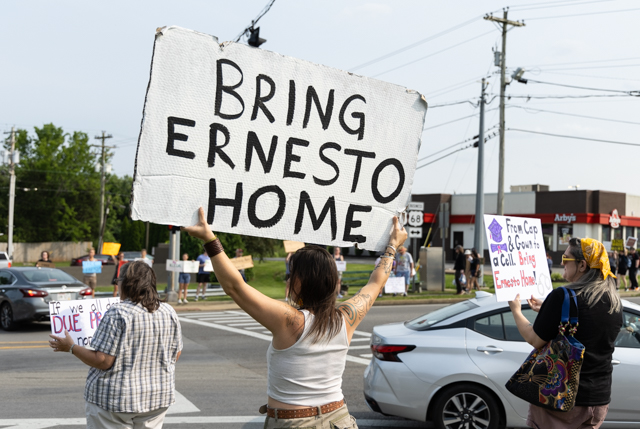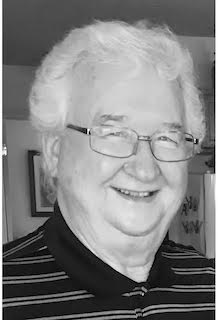Book review: Memoir strikes a balance between positive, negative
Published 12:00 am Sunday, February 20, 2011
Memoirs by celebrities and high-ranking politicians are frequently little more than exoneration and self-praise. They emphasize the ideas and actions that have positive impacts on their lives and careers, while glossing over – and sometimes omitting entirely – anything that might reflect badly on them.
Happily, this is not the case – at least in large part – with the memoirs of the 43rd president of the United States, George W. Bush. In “Decision Points,” he speaks proudly of what he considers to be his successes and frankly about his failures.
Here are some of the former president’s successes as he sees them: George W. himself picked Richard Cheney as his running mate, not the other way around as so much of the country believed at the time (p. 20). Four years later, in 2004, the perception was so widely held that Cheney actually ran the White House, President Bush seriously thought about replacing him on the GOP ticket with Sen. William Frist of Tennessee (p.86). Cheney offered to step aside, a proposal the president refused.
He rejected stem cell research from frozen embryos to a considerable extent, because his mother, Barbara, had suffered miscarriages and she showed him “the remains of the fetus, which she had saved in a jar to bring to the hospital. I remember thinking, there was a human life, a little brother or sister (p. 8).”
He was quite happy with No Child Left Behind, although many critics, educators included, argued that NCLB encouraged teachers to “teach to the test” rather than offer any materials of real substance. “Accountability,” he said, “would serve as a catalyst for reform” (p. 274). Unfortunately, however, most of this “accountability” was foisted on the teacher; little, if any, on the student, parents, principal or superintendent.
President Bush also wanted to reform Social Security and Medicare, the two most treasured programs of senior citizens in this country. He wanted to privatize much of Social Security (p. 291), an idea rejected not only by the opposition Democrats, but by many of his Republican colleagues as well. And he has no apology for “faith-based initiatives,” which many of his critics believed threatened the separation of church and state.
To be sure, the worst day of his presidency (as indeed for the lives of thousands of other Americans) was Sept. 11, 2001. The former president spends many pages describing that horrible day – from reading to Florida schoolchildren that morning to literally traveling around the country in Air Force One until it became clear that it was safe for him to return to Washington. Among many of his orders that day was to “shoot down suspicious looking planes,” passenger or otherwise, that refused commands to land in designated areas. “I had,” he reported, “just made my first decision as a wartime commander in chief” (p. 129).
His invasion of Afghanistan just after 9/11 was in many ways his proudest hour. The fanatics who attacked the World Trade Center in New York and the Pentagon in Washington had been trained in Afghanistan. Many of the Taliban captured there are still at Guantanamo Bay in Cuba, a problem from the Bush administration inherited by President Barack Obama.
In reference to success and failure, Bush still counts Iraq as a success, though over the years many of his fellow Americans have designated it a failure. Even high-ranking government official and Bush family friend Brent Scowcroft opposed an attack on Iraq. “Don’t attack Iraq” was the title of Scowcroft’s article in the Wall Street Journal. “Iraq would distract us from the war on terror and could unleash ‘an Armageddon in the Middle East’ ” (p. 238). Obviously, President Bush ignored Scowcroft’s advice (many Americans at that time thought Vice President Cheney was orchestrating the second Iraqi war). In his memoirs, President Bush is still confident that he acted correctly in attacking Iraq and removing Saddam Hussein from power. He writes: “I strongly believe that removing Saddam from power was the right decision. … The Iraqi people are better off with a government that answers to them instead of torturing and murdering them” (pg. 267).
Even while supporting his incursions into Iraq, the former president regrets and abhors Abu Ghraib. “I felt sick, really sick. This was not what our military or our country stood for. … I considered it a low point of my presidency” (p. 88-89). He also regrets the “Mission Accomplished” sign that fluttered behind him on board the USS Abraham Lincoln. He argues that the sign was actually for Lincoln’s crew, which had just completed the longest deployment for an aircraft carrier of its class (p. 257). He also wishes he could take back his statement of “Bring ’em on,” a statement, he says, that “was intended to show confidence in our troops … ” (p. 261).
While bemoaning Abu Ghraib and various utterances, Bush fully embraced the “enhanced interrogation techniques,” which included waterboarding: “The CIA interrogation program saved lives. Had we captured more al Qaida operatives with significant intelligence value, I would have used the program for them as well,” (p. 171). Those who opposed his Iraqi policy (no weapons of mass destruction were found) agreed with Scowcroft that our real military energies should be directed toward Afghanistan, because that’s where the terrorists of 9/11 were trained. Despite President Bush’s disclaimers about our involvement in Iraq, it is almost certain that a huge historical question mark will hover over Iraq for many years to come.
When President Bush left office in early 2009, the war in Iraq (which was by then the longest armed conflict in U.S. military history) was still raging, as was the one in Afghanistan. President Obama “inherited” both of these wars.
Then, as Bush’s second and final term in office ground to a close, the recession erupted, which added another challenge to his beleagured presidency. “Wall Street got drunk,” he exclaimed, and “we got the hangover.” In detail, he explains how the Troubled Asset Relief Program was formed, and then proceeded to shell out $700 billion – much to the detriment of capitalism – to failed companies. AIG, Lehman Brothers, Bear Stearns, General Motors and other entities were rescued by the American people’s tax dollars. The president said he didn’t want to “bail out” Wall Street, but that’s essentially what happened. All the spending going on today has ample precedent behind it.
The president’s memoirs strike a balance between positive and negative. Everyone, including the president of the United States, has a right to be judged by best performances, not simply and totally by failures. It is too early to assess his presidency; history usually catches up with presidents after a generation or two. Other presidents, such as Harry Truman and Richard Nixon, have had their reputations overhauled by latter-day historians. It is not beyond the realm of possibility that the same will happen with the second Bush.
— Reviewed by Carlton Jackson, Butler County.






